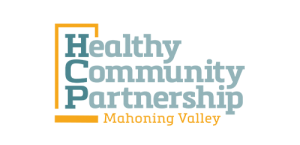ICYMI Mahoning Matters | “For the Health of It”
To Create a Healthy Community, All We Have to Do Is Ask “How Can I Help?”
Health is a small word that says a lot.
Well-respected authorities on the subject define health as: “a state of complete physical, mental and social well-being and not merely the absence of disease or infirmity” (World Health Organization). The U.S. Centers for Disease Control and Prevention has adapted this definition for use in its own materials: “Health is more than the absence of disease; it is a resource that allows people to realize their aspirations, satisfy their needs and to cope with the environment in order to live a long, productive, and fruitful life.”
In other words, health is everything.
Over the last two years especially, because of the ongoing COVID-19 pandemic as well as tensions linked back to ongoing social injustices, this expanded definition of health as everything is becoming more common, more understood, and more impactful.
When discussing health in this broad and inclusive context, the conversation quickly shifts to focus attention on specific factors that are impacting health and wellbeing, otherwise known as social determinants of health. Social determinants of health are “the conditions in the environments where people are born, live, learn, work, play, worship, and age that affect a wide range of health, functioning, and quality-of-life outcomes and risks.”
There are typically five categories that these elements fall into: Economic Stability, Educational Access & Quality, Healthcare Access & Quality, Neighborhood & Built Environment, and Social and Community Context.
Again, to simplify, social determinants of health are the social and environmental conditions that surround us and touch every aspect of our lives. Thus reinforcing the framework that health is everything.
In previous installments of “For the Health of It,” we’ve explored a couple of examples of social determinants that would fall under Neighborhood & Built Environment with aspects of Social & Community Context woven in. We’ve looked at the benefits of investing in physical infrastructure that supports multiple ways of traveling, safely, from place to place. We’ve also lifted up the importance of parks as essential investments in neighborhoods to ensure they are welcoming, connected, active places. And, we’ve recognized that we need to do better to make sure that decisions and investments are made more intentionally and more equitably.
CIVIC INVOLVEMENT
However, this month, I want to focus on an element that is not commonly considered when talking about community health. But, I’d argue, it is the beating pulse and one of the most important vital statistics for the health of a community: civic involvement.
After Ohioans voted in an expensive second primary, in a truly “Special” Election, and seeing the abysmal voter turnout numbers (Mahoning County’s turn out didn’t even make double digits)—
After seeing another round of election-inspired think-pieces examining Ohio and the Mahoning Valley, as though we are strange, unfamiliar specimens–
After reading news story after news story about political polarization, dysfunction, and corruption, at all levels: local, state, and national—
After watching incredibly passionate, talented, bright, shining lights diligently trying to highlight new, different paths forward burn out as quickly as a pinched candle wick —
After all of this, I am deeply concerned that the Mahoning Valley cannot become a truly healthy community until we become a more civically involved community.
In order to become a more civically involved community those who hold power must become more connected to and share their power with residents. And, residents must come together so their perspectives, their experiences, and their stories are not only heard but inform and shape collaborative approaches to building a healthy Mahoning Valley.
VALLEY HISTORY
I grew up here, in the Mahoning Valley–went to school, started my career, bought a house, deepened my already established roots. So, I understand the unique history and story of this place, especially the parts and the players that may lead to apathy at best, hostility at worst, especially for people or institutions with the power to make big decisions. Public and private leaders have led the Valley into some pretty dark periods. Each time assuring residents that this time will be different. They were not different.
A recent podcast, “Crooked City,” is making the rounds offering a re-telling of our troubled history. The podcast has received a lot of attention in a short time. In fact, a producer for the “Crooked City,” Johnny Chechitelli, is participating in an event that is part of the Public Library of Youngstown and Mahoning County’s “True Crime” series to discuss what went into the making of the podcast.
As a result of this tangled history of distrust (many times for good reason), the Valley’s social fabric has been torn and tattered for decades–its shredded edges whipping in the wind. However, this does not mean people have not stepped up to try to stitch it back together. They have, they continue to, and they will keep trying.
Part of the problem, and why we keep watching reruns of old episodes in our story, is that too often the solutions are thought to be brought to us by some kind of outside savior. If the Mahoning Valley wants to see a different story, we need to be the ones writing it.
IMPROVING HEALTH AND QUALITY OF LIFE
In an article featured in Community Catalyst titled “The People Closest to a Problem Are the Closest to the Solutions,” Kyle Brown, Lynn Buske, and Gloria Godchaux, from Project JONAH–Joining Our Neighbors, Advancing Hope–explain their approach to improving health and quality of life for residents in Eau Claire, Wisconsin, a midwest city with a population 68,000. JONAH is driven by a framework that “believes all persons have value and can contribute to address the root cause of injustice issues. Through the power of each person’s story, we learn from those who have been directly impacted. [And] encourages people to advocate for themselves and support their work to make policy changes to experience a deserved quality of life.”
The title of this article is a phrase often used to guide strategies and activities in grassroots, neighborhood-centered work. But, more organizations like JONAH, including many local coalitions and organizations, have adopted this approach in their work as a reaction to the recognition that, “public input is often taken by human service agencies, but the value of voices of those directly impacted still falls upon deaf ears.” And, human service agencies are not the only entities asking for public input but not truly listening to what residents are saying. This unfortunately is a trend and practice that has been too long lived.
Following this framework, residents of the Mahoning Valley deserve to live in a community that sees them, hears them, and supports them. When this happens, we will be able to start a new chapter instead of re-reading the same tired tale.
CREATING A NEW NARRATIVE
What can be done to build enough power to create a new narrative? Voting is certainly one opportunity. Supporting and electing public servants who have experience, knowledge, and proximity to our community’s challenges also means they have greater access to solutions that will make a difference, not just win elections.
But civic involvement is more than voting. Civic involvement is showing up, regularly and routinely.
It’s attending school board, city council, and township trustee meetings. It’s volunteering for community clean ups. It’s becoming a member of an organization you see doing good work in your community. It’s sharing gifts of time, money, or other resources. It’s providing comments and feedback when requested by public agencies on major projects. It’s distributing information about upcoming public events. It’s attending upcoming public events. It’s writing letters to the editor and sharing perspectives on important issues. It’s baking and bringing a dish to a potluck.
In summary, civic involvement is regularly and routinely responding and reacting to the needs of communities whose struggles, and celebrations, are too often overlooked. Like other results-focused health-centered decisions, like exercise or making dietary changes, civic involvement is not a one and done. It is a long-term investment in yourself–and your community–that requires commitment and consistency before you see the fruits of your labor.
Civic involvement creates connections and builds relationships. By creating and building connections and relationships, communities can start to be seen, to be heard, and to be effective. To pull the unraveled threads back together and strengthen the social fabric that binds us together.
In this way, civic involvement, like health, touches everything.
Some of the challenges communities face may seem too big or too complicated to overcome. But, a healthy community, one with robust, dynamic civic involvement, recognizes that the solutions are already there, within the community itself. To get started on this path towards becoming a healthy, civically involved community, the first thing we have to do is show up and be brave enough to ask, “what can I do to help?”
And, listen to Margaret Meade: “Never doubt that a small group of thoughtful, committed citizens can change the world; indeed, it’s the only thing that ever has.”
Sarah Lowry is the director of Healthy Community Partnership Mahoning Valley, a collaboration of organizations and members who share a commitment to a healthier Mahoning Valley, with support from the Community Foundation of the Mahoning Valley. For more information, visit HCPMahoningValley.com.
Read more at: https://www.mahoningmatters.com/living/community-columnists/article264843244.html#storylink=cpy
This is an updated version of the community column as published on Saturday, June 18, 2022.
Read “For the Health of It” every month at MahoningMatters.com

